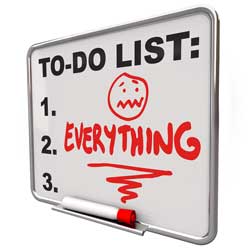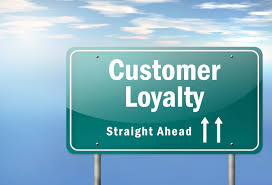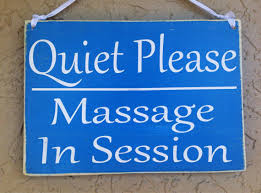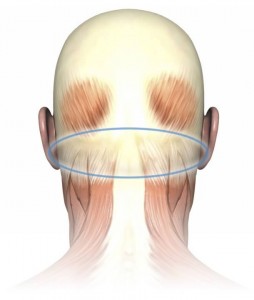 When I finished massage school, back in the early 2000’s, my classmates and I shared a lot of enthusiasm to graduate, start working, and build a successful practice. Similarly, today, a lot of people graduate hoping to build a private practice—for many obvious reasons. Let’s compare the realities of the pros and cons of private practice. On the plus side:
When I finished massage school, back in the early 2000’s, my classmates and I shared a lot of enthusiasm to graduate, start working, and build a successful practice. Similarly, today, a lot of people graduate hoping to build a private practice—for many obvious reasons. Let’s compare the realities of the pros and cons of private practice. On the plus side:
- Individuality: Private practice allows you to create a space that’s a perfect reflection of who you are. You can decorate in your style, or use your favorite essential oils.
- Control: You can control your schedule, your appointments, even whom you do or do not take on as a client.
- Finances: Simply put, you get to keep all the money, without having to share a cut of it with an employer.
These are all tempting reasons to start your own private practice. What people tend to forget about are the more difficult aspects of building your own private practice—the reasons why about 80% of therapists eventually end up working for someone else:
- Extra work: When you’re working in private practice, typically you need to add an average of one hour of other work for every hour of massage in order to take care of accounting, maintenance, and other aspects of managing your business. This means that your twenty clients add an additional twenty hours of work per week. Instead of earning that $60, $80 or $100 per hour, you are likely earning half of that.
- Isolation: Private practice can be lonely. When a wonderfully skilled, experienced therapist applies at Dreamclinic, they frequently say they want to be a part of a larger community. They want to exchange skills and interact with peers. “It’s amazing how the solitude can eat away at you,” they say.
- Marketing: Promoting a business is not easy. If it were, everybody would start their own business. Initially, many practitioners expect every friend and family member to become a client of theirs. Six months later, they realize that that’s translated into approximately three appointments and that they need to turn to advertising and other forms of marketing to build their clientele, which can be tough between the competition and the additional skills needed to do it well.
While you should follow your bliss and listen to your heart, make sure you head into your private practice with your eyes wide open. Also, realize that if you find it challenging to be on your own, whether that’s from not getting enough clients or struggling to find enough free time outside of your private practice, don’t feel bad. This is a common challenge that others deal with as well, some of whom find ways around it and some of whom end up choosing to work for a good employer.






 One of the biggest obstacles that comes up when you’re trying to build a client base—whether working for someone else, or in your own private practice—is building the habit of simply asking clients to come back to see you. Just about every therapist knows that it is supposed to be good business practice, but the average therapist isn’t comfortable even asking a client to reschedule. They state that doing so feels “pushy” or “salesy.”
One of the biggest obstacles that comes up when you’re trying to build a client base—whether working for someone else, or in your own private practice—is building the habit of simply asking clients to come back to see you. Just about every therapist knows that it is supposed to be good business practice, but the average therapist isn’t comfortable even asking a client to reschedule. They state that doing so feels “pushy” or “salesy.” We therapists aren’t always marketing geniuses. Be that as it may, one of the major questions you have to ask yourself as a massage practitioner or center is: what do we specialize in? It is only then that you can find the right place—and the right customer—to market to.
We therapists aren’t always marketing geniuses. Be that as it may, one of the major questions you have to ask yourself as a massage practitioner or center is: what do we specialize in? It is only then that you can find the right place—and the right customer—to market to.
 Do you ever get asked to give massage when you’re at a party or other event? I suppose I’m a reasonably social person because I do, inevitably, find myself at some kind of a function or evening reception at least once a week, sometimes two to three times a week.
Do you ever get asked to give massage when you’re at a party or other event? I suppose I’m a reasonably social person because I do, inevitably, find myself at some kind of a function or evening reception at least once a week, sometimes two to three times a week. When I first started practicing massage, I enjoyed something of a meteoric success. My practice went from zero clients to fully busy within three months. I didn’t really think much about it back then, ten or twelve years ago, but these days, I get asked what I did, and so I thought I’d share.
When I first started practicing massage, I enjoyed something of a meteoric success. My practice went from zero clients to fully busy within three months. I didn’t really think much about it back then, ten or twelve years ago, but these days, I get asked what I did, and so I thought I’d share.
 What’d you have for lunch? Was it a burger? Lasagna? Perhaps it was a delicious taco—a spicy Mexican treat with lots and lots of delicious onions? Mmm… Sounds good, but that was your lunch break. Now, you’re about to see a client. Are they going to experience your fine, effective massage technique, or are they going to experience the fragrance of your recently consumed lunch? It’s all about context. Onions smell great at the dinner table, but not so good on the massage table.
What’d you have for lunch? Was it a burger? Lasagna? Perhaps it was a delicious taco—a spicy Mexican treat with lots and lots of delicious onions? Mmm… Sounds good, but that was your lunch break. Now, you’re about to see a client. Are they going to experience your fine, effective massage technique, or are they going to experience the fragrance of your recently consumed lunch? It’s all about context. Onions smell great at the dinner table, but not so good on the massage table. On occasion, I’ve run into licensed massage therapists who have experienced boredom with their massage practice and had decided to move on to a different career. I know this happens for some, but, for myself, I honestly can’t imagine ever getting bored with the practice of massage.
On occasion, I’ve run into licensed massage therapists who have experienced boredom with their massage practice and had decided to move on to a different career. I know this happens for some, but, for myself, I honestly can’t imagine ever getting bored with the practice of massage.